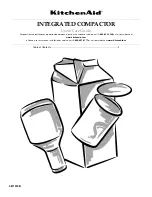
12
ENGLISH
EN
4.4 Controls
4.4.1 Implement lifter, mechanical (10:A)
To switch between working position and transport
position:
1. Depress the pedal fully.
2. Release the pedal slowly.
4.4.2 Service brake - Clutch (10:B)(4125M)
A pedal that combines both service brake and
clutch. There are 3 positions:
1. Pedal released – forward drive
engaged. The machine will
move if a gear is engaged.
Service brake not activated.
2. Pedal depressed halfway –
forward drive disengaged, gear shifting can be
performed. Service brake not activated.
3. Pedal fully depressed – forward drive
disengaged. Service brake fully activated.
NOTE! You must never regulate the operating
speed by slipping the clutch. Use a suitable gear
instead, so that the right speed is obtained.
4.4.3 Clutch-parking brake (10:B)
(4135H, 4155H)
Never press the pedal while driving.
There is a risk of overheating in the
power transmission.
The pedal has the following
three positions:
•
Released
. The clutch is not activated. The park-
ing brake is not activated.
•
Depressed halfway
. Forward drive disengaged.
The parking brake is not activated.
•
Fully depressed
. Forward drive disengaged.
The parking brake is fully activated but not
locked. This position is also used as emergency
brake.
4.4.4 Inhibitor, parking brake (10:C)
The inhibitor locks the “clutch-brake”
pedal in the depressed position. This func-
tion is used to lock the machine on slopes,
during transport, etc., when the engine is
not running.
The parking brake must always be re-
leased during operation.
Locking:
1. Depress the pedal (12:B) fully.
2. Move the inhibitor (12:C) to the right.
3. Release the pedal (12:B).
4. Release the inhibitor (12:C).
Unlocking:
Press and release the pedal (12:B).
4.4.5 Driving-service brake (10:F)
(4135H, 4155H)
If the machine does not brake as expect-
ed when the pedal is released, the left
pedal (1:B) should be used as an emer-
gency brake.
The pedal determines the gearing ratio between the
engine and the drive wheels (= the speed). When
the pedal is released, the service brake is activated.
1. Press the pedal forward –
the machine moves forward.
2. No load on the pedal – the ma-
chine is stationary.
3. Press the pedal backward –
the machine reverses.
4. Reduce the pressure on the
pedal – the machine brakes.
4.4.6 Throttle and choke control (10:D)
If the engine runs unevenly there is a
risk that the control is too far forward
so that the choke is activated. This dam-
ages the engine, increases fuel con-
sumption and is harmful to the
environment.
A control for setting the engine speed and to choke
the engine when starting from cold.
1. Choke – for starting a cold engine. The
choke position is located at the front of the
groove.
Do not operate in this position when the
engine is warm.
2. Full throttle – when the machine is in
operation, full throttle should always be
used.
The full throttle position is approximately
2 cm behind the choke position.
3. Idling.
4.4.7 Ignition lock (10:E)
Do not leave the machine with the key
in position 2 or 3. There is a fire risk,
fuel can run into the engine through the
carburettor, and there is a risk of the
battery being discharged and damaged.
Ignition lock used for starting/stopping the engine.
Four positions:
1. Stop position – the engine is short-
circuited. The key can be removed.





































